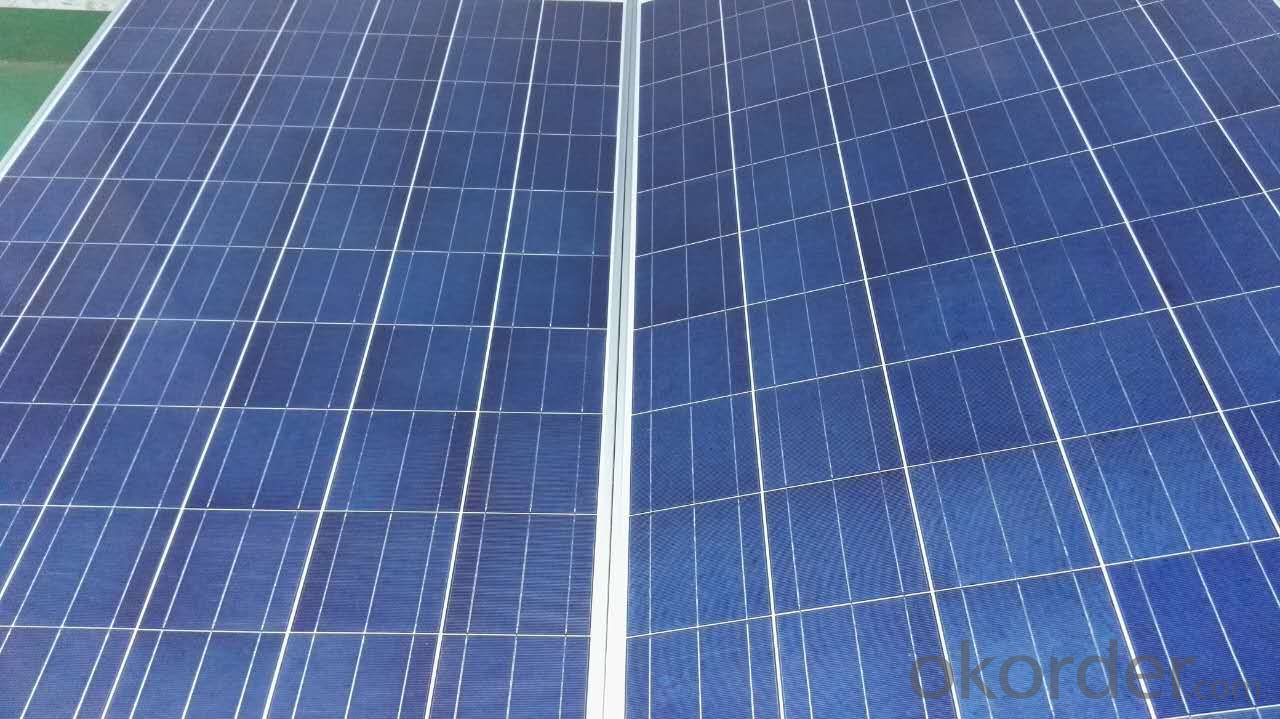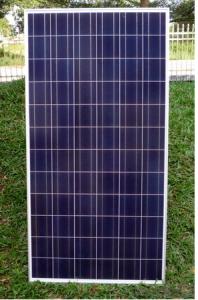CNBM Poly 70W Off Grid Solar Sytem with 10 Years Warranty
- Loading Port:
- Shanghai
- Payment Terms:
- TT OR LC
- Min Order Qty:
- 10 watt
- Supply Capability:
- 1000 watt/month
OKorder Service Pledge
OKorder Financial Service
You Might Also Like
Item specifice
CNBM Poly 70W Off Grid Solar Sytem with 10 Years Warranty
Product description
Off-the-grid is a system and lifestyle[1] designed to help people function without the support of remote infrastructure, such as anelectrical grid. In electricity, off-grid can be stand-alone power system or mini-grids typically to provide a smaller community with electricity. Off-grid electrification is an approach to access electricity used in countries and areas with little access to electricity, due to scattered or distant population. The term off-the-grid (OTG) can refer to living in a self-sufficient manner without reliance on one or more public utilities. People who adopt this lifestyle are called off-gridders.[2]
The concept of a sustainable off-grid community must take into consideration the basic needs of all who live in the community. To become truly self-sufficient, the community would need to provide all of its own electrical power, food, shelter and water. Using renewable energy, an on-site water source, sustainable agriculture and vertical farming techniques is paramount in taking a community off the grid. A recent concept design by Eric Wichman shows a multi-family community, which combines all of these technologies into one self-sufficient neighborhood. To grow the community you simply add neighborhoods using the same model as the first. A self-sustained community reduces its impact on the environment by controlling its waste and carbon footprintElectrical power can be generated on-site with renewable energy sources such as solar (particularly with photovoltaics), wind, micro hydro, geothermal; with a generator or Micro combined heat and power with adequate fuel reserves. Such a system is called a stand-alone power system. In addition, it is possible to simply eliminate electric power such as in Old Order Amish and Old Order Mennonitecommunities.

Application
Residential
Commercial
Industrial
Feature
Off-the-grid homes are autonomous; they do not rely on municipal water supply, sewer, natural gas, electrical power grid, or similar utility services. A true off-grid house is able to operate completely independently of all traditional public utility services. The idea has been recently popularized by certain celebrities including Ed Begley, Jr.[3] who stars in the Living with Ed[4] television show on the Home & Garden Television (HGTV) network. Actress Daryl Hannah promotes off-grid living and constructed her home in Colorado according to those principles, as does survival expert and Dual Survival co-star Cody Lundin,[5] who lives in a self-designed, passive solar earth house in the high-desert wilderness of Northern Arizona, collecting rainwater, composting waste, and paying nothing for utilities.[6][7]
Packaging
With carton and box
- Q:How do solar energy systems impact property values?
- Solar energy systems can have a positive impact on property values. Studies have shown that homes equipped with solar panels tend to sell at a higher price and faster compared to homes without solar. This is because solar energy systems offer long-term cost savings on electricity bills, reduce carbon footprint, and appeal to environmentally conscious buyers. Additionally, some states offer incentives and tax credits for installing solar, further increasing property value.
- Q:Can solar energy systems be used for powering electric vehicle carpooling services?
- Yes, solar energy systems can be used to power electric vehicle carpooling services. Solar energy systems generate electricity by converting sunlight into usable energy, which can be used to charge electric vehicles. By installing solar panels on the carpooling service's parking lot or charging stations, the vehicles can be charged directly from the sun's energy. This not only reduces the carbon footprint of the carpooling service but also helps in promoting renewable energy usage. Additionally, solar-powered carpooling services can benefit from reduced electricity costs as they would rely less on the grid for charging the vehicles.
- Q:Can solar energy systems be used for powering telecommunications towers?
- Yes, solar energy systems can be used for powering telecommunications towers. Solar panels can be installed on the rooftops or nearby areas of the towers to capture sunlight and convert it into electricity. This renewable energy source provides a reliable and sustainable power supply, especially in remote or off-grid locations where it may be challenging to access traditional electricity grids. Additionally, solar energy systems can help reduce operational costs and environmental impact associated with using fossil fuels or diesel generators to power telecommunications towers.
- Q:What is the average payback period for a solar energy system?
- The average payback period for a solar energy system varies depending on various factors such as the initial cost of the system, location, energy usage, available incentives, and financing options. However, on average, it typically ranges from 5 to 10 years.
- Q:Can solar energy systems be used in areas with limited access to emergency services?
- Yes, solar energy systems can be used in areas with limited access to emergency services. Solar energy systems are independent and self-sufficient, requiring minimal maintenance and intervention. They can provide electricity for various purposes, including powering emergency communication devices, lighting, and medical equipment. Additionally, solar energy systems can reduce reliance on traditional energy sources, making them a reliable and sustainable option for areas with limited access to emergency services.
- Q:Can solar energy systems be installed in areas with high winds?
- Yes, solar energy systems can be installed in areas with high winds. However, it is important to design and install them properly to withstand the wind loads. This can involve using strong mounting structures, reinforced fasteners, and aerodynamic panel designs. Additionally, regular maintenance and inspections are crucial to ensure the system remains secure and functional in such conditions.
- Q:Can a solar energy system be installed on a shopping center or mall?
- Yes, a solar energy system can be installed on a shopping center or mall. In fact, many shopping centers and malls around the world are now utilizing solar panels to generate electricity. The large rooftop spaces available in these establishments make them ideal for solar installations. By harnessing the power of the sun, shopping centers and malls can significantly reduce their reliance on traditional energy sources, lower their carbon footprint, and reduce their energy costs. Furthermore, solar energy systems can also be integrated into parking lots or carports, providing shade for vehicles while simultaneously generating clean energy. Overall, installing a solar energy system on a shopping center or mall is a viable and sustainable solution for meeting their energy needs.
- Q:Can a solar energy system be installed in a remote location without access to the electrical grid?
- Yes, a solar energy system can be installed in a remote location without access to the electrical grid. Solar energy systems consist of solar panels, batteries, and inverters, which can generate and store electricity from the sun's energy. This self-contained system can provide power to remote locations, allowing them to operate independently of the electrical grid.
- Q:Can solar energy systems be used in areas with limited access to solar charge controllers?
- Yes, solar energy systems can still be used in areas with limited access to solar charge controllers. While solar charge controllers are important for regulating the flow of electricity from the solar panels to the batteries, there are alternative methods available. For example, manual charge controllers or simple voltage regulators can be used to protect the batteries from overcharging. Additionally, it is possible to design solar energy systems with smaller battery banks or use direct power consumption without the need for batteries, which eliminates the requirement for charge controllers altogether. Therefore, even in areas with limited access to solar charge controllers, solar energy systems can still be effectively utilized.
- Q:Can solar energy systems be installed on commercial buildings?
- Yes, solar energy systems can definitely be installed on commercial buildings. In fact, many businesses are increasingly adopting solar power to meet their energy needs and reduce their carbon footprint. These systems can be customized to suit the specific requirements and available space of each commercial building, making it a viable and sustainable option for businesses to generate clean and renewable energy.
1. Manufacturer Overview |
|
|---|---|
| Location | |
| Year Established | |
| Annual Output Value | |
| Main Markets | |
| Company Certifications | |
2. Manufacturer Certificates |
|
|---|---|
| a) Certification Name | |
| Range | |
| Reference | |
| Validity Period | |
3. Manufacturer Capability |
|
|---|---|
| a)Trade Capacity | |
| Nearest Port | |
| Export Percentage | |
| No.of Employees in Trade Department | |
| Language Spoken: | |
| b)Factory Information | |
| Factory Size: | |
| No. of Production Lines | |
| Contract Manufacturing | |
| Product Price Range | |
Send your message to us
CNBM Poly 70W Off Grid Solar Sytem with 10 Years Warranty
- Loading Port:
- Shanghai
- Payment Terms:
- TT OR LC
- Min Order Qty:
- 10 watt
- Supply Capability:
- 1000 watt/month
OKorder Service Pledge
OKorder Financial Service
Similar products
New products
Hot products
Related keywords





























